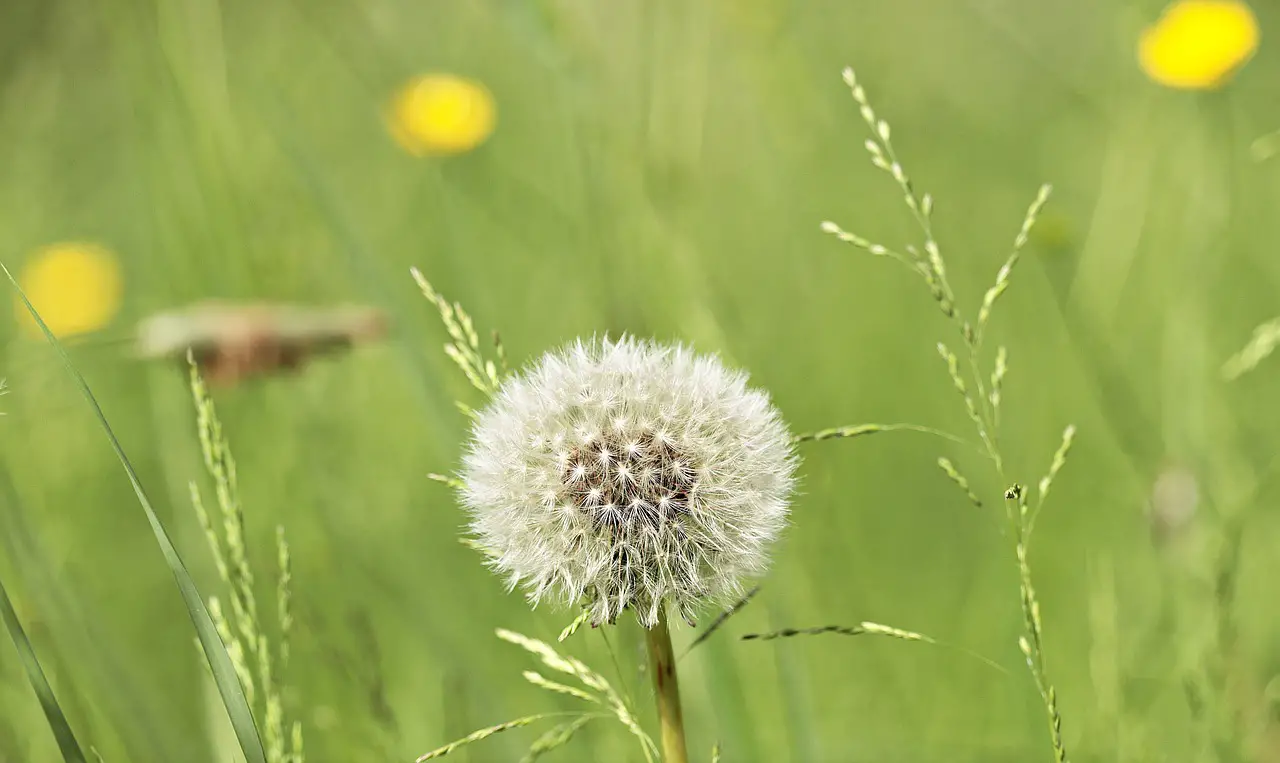Dandelions are a common sight in gardens, lawns, and even in the cracks of sidewalks. While some consider them a weed, others appreciate their medicinal and culinary uses. Despite their prevalence, there is often confusion about whether dandelions are annuals or perennials. This article aims to address this question and explore other aspects of this ubiquitous plant.
Are dandelions annuals or perennials? Dandelions are actually perennials, meaning they have the ability to grow back year after year.
What Are Annuals and Perennials?
Annuals are plants that complete their life cycle in a single growing season. After producing seeds, the plant dies off and needs to be replanted the next year. Perennials, on the other hand, are plants that persist for multiple years, growing back each season from the same root system.
Dandelions are often confused for annuals because they seem to appear and disappear within a single season. However, their root system remains intact, allowing them to grow back the following year.
Understanding whether a plant is an annual or perennial can significantly affect how you manage it, whether in your garden or on your lawn.
Lifecycle of a Dandelion
Dandelions go through a fascinating life cycle that begins with the sprouting of their taproot. They usually bloom in the spring, and their distinctive yellow flowers are converted into seed heads as the season progresses. These seed heads are easily carried away by the wind, leading to the widespread dissemination of the plant.
The lifecycle is completed when the plant dies back, but the root system remains intact. This means the dandelion is poised to reappear the following spring, marking it as a perennial.
As a perennial plant, dandelions can sometimes live for several years, which can be either a curse or a blessing depending on your perspective.
How Do Dandelions Spread?
Dandelions have a remarkable ability to spread, primarily through their seed heads, commonly known as “dandelion clocks.” These structures are effectively designed to disperse seeds over a broad area, assisted by wind currents.
Not only do they spread via seeds, but their perennial root system can also produce new plants. The taproot digs deep into the soil, and even if you remove the aerial parts of the plant, it is highly likely to regenerate unless the root is entirely removed.
Dandelions can also propagate vegetatively, meaning if a piece of the root system is separated but remains in the ground, it can generate a new plant.
How Do You Remove Dandelions?
Removing dandelions can be a challenging task primarily because they are perennials with a deep-rooted system. Simply plucking the flower or the leaves won’t stop it from coming back next year.
For effective removal, the entire taproot needs to be excavated from the ground. Many specialized tools are designed for this purpose.
If you opt for chemical methods, herbicides can also be effective, although they come with environmental implications. Always follow the directions and safety precautions when using any chemicals in your yard.
Are Dandelions Edible?
Dandelions are not just persistent; they are also versatile. Every part of the plant is edible, from the roots to the leaves and the flowers.
People have used dandelions for centuries for various culinary purposes. The leaves can be used in salads, the roots can be ground into a coffee substitute, and the flowers can be used to make dandelion wine.
Given their perennial nature, you have an opportunity to harvest them year after year, if you choose to keep them in your garden or yard.
Are Dandelions Medicinal?
Apart from their culinary uses, dandelions have been used in traditional medicine for ages. They are rich in vitamins and minerals and have been used to treat ailments such as liver problems, kidney diseases, and digestive issues.
However, it’s essential to consult a healthcare professional before using dandelions for medicinal purposes. The plant can interact with certain medications and may not be suitable for everyone.
The perennial characteristic of dandelions means they are a consistent source for those who utilize their medicinal properties.
How Do Dandelions Affect Biodiversity?
One of the benefits of dandelions, often overlooked, is their contribution to biodiversity. These plants flower early in the spring, providing an essential source of nectar and pollen for bees and other pollinators.
Their extensive root system also helps to aerate the soil, making it more conducive for other plants to grow.
In this way, the dandelion’s perennial nature aids its role in supporting various forms of life, far beyond what we may initially consider.
What Do Dandelions Symbolize?
Culturally, dandelions have been symbols of resilience and transformation. Their ability to grow in challenging conditions mirrors human tenacity and adaptability.
Their transition from a bright yellow flower to a delicate seed head has also made them a symbol of change and potential.
Whether you view them as weeds or wonders, their symbolism is yet another layer to consider when you encounter these persistent perennials.
Can You Cultivate Dandelions?
If you find value in dandelions, whether culinary, medicinal, or aesthetic, you might be interested in cultivating them intentionally. Given that they are perennials, this could be a long-term commitment.
Select a spot in your yard that has well-drained soil and receives plenty of sunlight. Plant the seeds or taproots, and in a few weeks, you should see your dandelions sprouting.
Cultivating dandelions is relatively straightforward, thanks to their hardy and resilient nature. Once established, they require minimal care.
Conclusion
Dandelions are indeed perennials, capable of growing back year after year from the same root system. Their persistent nature is both a challenge and an opportunity, depending on how you view this versatile plant. From their culinary and medicinal applications to their role in supporting biodiversity, dandelions are more than just a simple weed. Understanding their perennial nature provides valuable insight into how to manage, utilize, or appreciate them in our lives.

